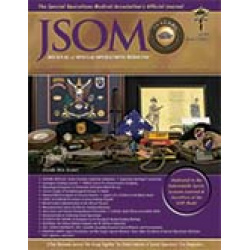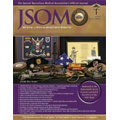Exploring Tourniquet Conversion in Simulation to Develop Concepts and Hypotheses
21(3). 23 - 29 (Journal Article)
Background: Compared with those of tourniquet application, tourniquet conversion concepts are underdeveloped. The purpose of this project was to develop tourniquet conversion concepts and generate hypotheses. Methods: One person performed 100 tests of tourniquet application and conversion. Testing varied by conversion types, materials, and assessments. Conversions were from improvised or Combat Application Tourniquets (C-A-T) to another C-A-T, a new site (with initial C-A-T only), a pneumatic Emergency and Military Tourniquet (EMT), or a pressure dressing (compression bandage or a roll gauze and an elastic wrap). Simulated limbs were created using plastic bottle-based manikins, pool noodle-based manikins, plastic pipes, glass bottles, a rain downspout, and a cardboard poster tube. Results: Tourniquet application, conversion, and total times averaged 105, 132, and 237 seconds, respectively. Improvised tourniquet time was longer than that of C-A-T (p ≤ .05, all three). By initial tourniquet site, the 2-3 inches site had longer conversion and total time (p ≤ .02, both) compared with highest site. By whether initial tourniquets placed were also used in conversion, total time was shorter if yes (p = .05). Conversion to a pressure dressing was longer in conversion and total time (p ≤ .02, both) compared with conversion to a tourniquet. One wrap was short; we switched to those longer to cover limbs better. Limb types varied for indentation. Conversion communications improved when we used abbreviations and symbols. Conclusions: This preliminary project simulated tourniquet conversion to develop clinical concepts and research hypotheses to build a better basis for later research.


 Español
Español 




